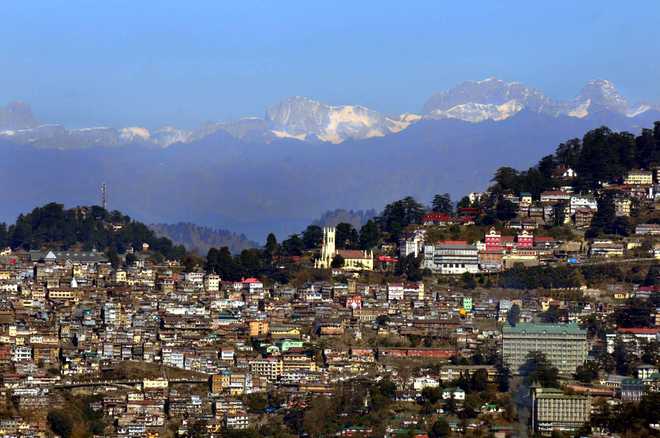
Pratibha Chauhan
Tribune News Service
Shimla, December 16
Even as the forest area within the Shimla Municipal Corporation has remained almost stagnant over the last 15 years, 56 hectares under agriculture and open category have been used for construction purposes, making the town more concrete.
With there being a ban on new constructions in 17 green belts (414 hectares) of the town since 2000, the forest area has remained almost the same. Though the result of the ban has helped convert the moderate dense forests into very dense forests, there has been rapid urban sprawl. The consistent increase in the built-up area to 328 hectares in 2002, 356 hectares in 2007, 372 hectares in 2012 and 384 hectares in 2017 is a clear indicator to this fact.
These are the findings of a comparative study of urban forests within the Shimla MC undertaken by the Council for Science, Environment and Technology by taking into account the changes in forest cover. The five-year interval mapping was done with the help of data and pictures culled using remote sensing and GIS.
The findings indicated that 11 hectares under agriculture and 46 hectares in the open category have been converted into the built-up area. There are 1,880.13 hectares of precious urban forests falling within the urban limits of the capital which are at present being managed by the Forest Department. The urban forests were earlier under the control of the Shimla MC but were handed over to the department for better management and conservation.
It was on November 16, 2017, that the National Green Tribunal (NGT) imposed a ban on all new constructions within the core and green area. Besides, the NGT order said no construction would be allowed beyond two storeys and an attic floor. The order also barred the state government from regularising the unauthorised constructions within the core area and green and forest areas.
The very dense forests, which were 594 hectares in 2002, rose to 676 hectares in 2007, 720 hectares in 2012 and 823 hectares in 2017. The result was that the area under moderate dense forests had dipped from 615 hectares in 2002 to 598 hectares in 2007, 554 hectares in 2012 and to 457 hectares in 2017. As such, though there has been an overall positive change in the forest cover within the Shimla MC, the urbanisation has been very high.
Significantly, the area under playgrounds has remained static at six hectares in 15 years.



























